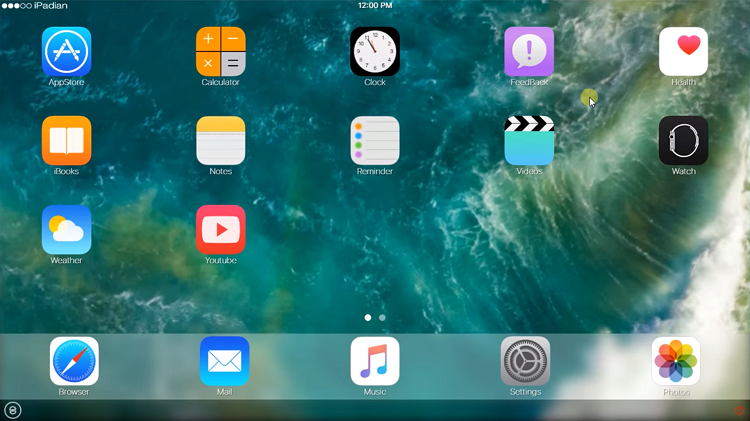Every app must supply small icons for use on the Home screen and throughout the system once your app is installed, as well as a larger icon for display in the App Store. Provide different sized icons for different devices. Make sure that your app icon looks great on all the devices you support. Mimic your small icon with your App Store icon. Changing app icons mac. Tutorial for changing macOS icons. Customize and Change Icons On macOS in 2019: All you need to do to change the icon is to find an icon first. For that, you need to google search an image which is having.icns as it names extension. Follow the below steps to change the icons:-If you have a folder or app already on your computer and want to use. Federico Viticci of MacStories created a complex shortcut to let you change app icons, contact icons, icon colors, and more (via MacStories). Home Screen Icon Creator. Viticci reverse. After the script has been created do the following: Find the source app with the icon you want. Get Info of the source app (cmd-i). Click on the icon inside the source app's info window (Not the one in the big Preview section at the bottom, if you have one of those; the little one in the top-left corner.). Copy it (cmd-c)Get Info of the automator script (i.e., the destination app) (cmd-i).
To answer the simplest part of the question 'How can I run iOS apps on my MacBook?' , well you can't in the conventional sense of clicking on the app in the Applications Directory, it doesn't work that way. Once you’re running macOS Catalina and have Xcode 11, turning on Project Catalyst is a breeze: Open your iOS app project in Xcode. Go to project settings and check the Mac box. The Mac version of the app should now be created. The new Mac app shares the same codebase, frameworks, resources, and runtime environment as your iOS app. (Pocket-lint) - Apple's first Macs running on Silicon chips have been revealed with a MacBook Air, Mac Mini and MacBook Pro all in the line up and all able to run any iOS app.
Native Mac apps built with Mac Catalyst can share code with your iPad apps, and you can add more features just for Mac. In macOS Big Sur, you can create even more powerful versions of your apps and take advantage of every pixel on the screen by running them at native Mac resolution. Apps built with Mac Catalyst can now be fully controlled using just the keyboard, access more iOS frameworks, and take advantage of the all-new look of macOS Big Sur. There’s never been a better time to turn your iPad app into a powerful Mac app.
Designed for macOS Big Sur.
Running Ios Apps On A Mac
Ios Apps On Mac Os
When an app built with Mac Catalyst runs on macOS Big Sur, it automatically adopts the new design. The new Maps and Messages apps were built with the latest version of Mac Catalyst.
Get a head start on your native Mac app.
Fullscreen app on mac. Your iPad app can be made into an excellent Mac app. Now’s the perfect time to bring your app to life on Mac. The latest version of Xcode 12 is all you need. Begin by selecting the “Mac” checkbox in the project settings of your existing iPad app to create a native Mac app that you can enhance further. Your Mac and iPad apps share the same project and source code, making it easy to make changes in one place.

Optimize your interface for Mac.
Your newly created Mac app runs natively, utilizing the same frameworks, resources, and runtime environment as apps built just for Mac. Fundamental Mac desktop and windowing features are added, and touch controls are adapted to the keyboard and mouse. By default, your app will scale to match the iPad’s resolution. On macOS Big Sur, you can choose “Optimize interface for Mac” to use the Mac idiom, running your app using the native resolution on Mac. This gives you full control of every pixel on the screen and allows your app to adopt more controls specific to Mac, such as pull-down menus and checkboxes.
Even more powerful.

The new APIs and behaviors in macOS Big Sur let you create even more powerful Mac apps. Apps can now be fully controlled using just the keyboard. You can create out-of-window and detachable popovers, control window tabbing using new window APIs, and make it easier for users to select photos in your app by using the updated Photos picker. iOS Photos editing extensions can now be built to run on Mac. And your app is even easier to manage when it’s running in the background with improved app lifecycle APIs.
New and updated frameworks.
Mac Catalyst adds support for new and updated frameworks to extend what your apps can do on Mac. HomeKit support means home automation apps can run alongside the Home app on Mac. Fantasy grounds mobile app. The addition of the ClassKit framework lets Mac apps track assignments and share progress with teachers and students. Plus, there are updates to many existing frameworks, including Accounts, Contacts, Core Audio, GameKit, MediaPlayer, PassKit, and StoreKit.
Tools and resources.
Download Xcode 12 and use these resources to build native Mac apps with Mac Catalyst.